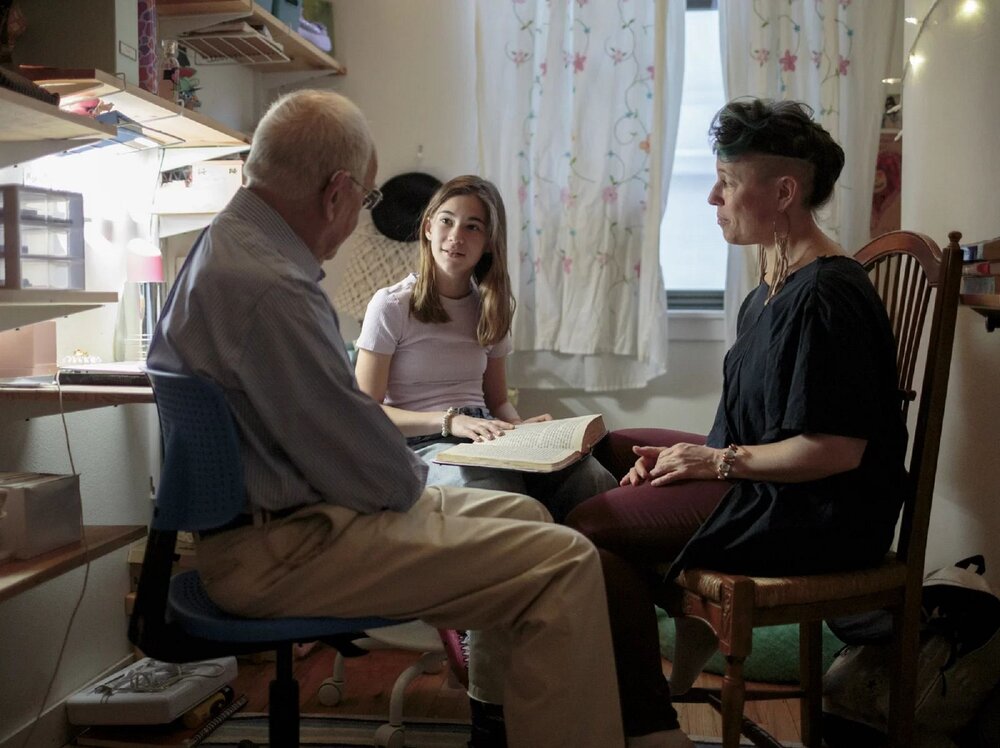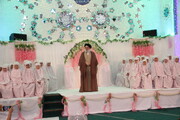Hawzah News Agency – For 12-year-old Nomi Kline Solmsen, preparing for her upcoming bat mitzvah is a family affair. Her grandfather, a rabbi, is helping her learn to chant the words from the Torah. Her aunt, also a religious leader, is working with her to translate the Hebrew and come up with her own interpretation of the words.
"Because the Torah was meant to be discussed," Nomi says. "I get to be part of that discussion. I get to have my own voice."
For children like Nomi, who see this rite of passage as a basic human right, it can be surprising to realize how recent the history of the bat mitzvah really is.
This weekend, Jewish communities across the country will be marking the 100th anniversary of that first American bat mitzvah. There will be talks and podcasts and celebrations of this coming-of-age ritual--stories about the past and plans for the future.
Since about the 14th century, boys have had bar mitzvah services, but the first American bat mitzvah for girls didn't happen until 1922.
Since at least the 14th century, boys have had bar mitzvah services, adding their voices to the Jewish community, says Rabbi Carole Balin, a professor emerita of Jewish history at Hebrew Union College who's working on a book about early bat mitzvahs. But girls didn't have an equivalent rite of passage.
Balin says there were some early rituals for girls in the Ottoman and Hungarian Empires. And confirmation, an alternative coming-of-age ceremony, was adopted by Jews in 19th century Prussia and later used by Reform temples for both boys and girls.
But the first American Bat Mitzvah didn't happen until 1922. That's when Rabbi Mordecai Kaplan bat mitzvahed his daughter, Judith, at New York City's Society for the Advancement of Judaism, a temple that's still around today. As Balin notes, it was personal.
"He always joked that he initiated the rite for four reasons — Judith being the first, and his younger daughters being the second, third and fourth," Balin says.
The first U.S. bat mitzvah left out important coming-of-age practices.
The actual details of that first bat mitzvah may be somewhat surprising to today's congregations. Unlike girls today, Judith Kaplan didn't actually read from the Torah. She was summoned to the bimah, the stage where the Torah is read, only after her father had read the weekly portion.
Judith also didn't climb up to the top of the bimah, but rather stood at the bottom, reading from a separate book. This difference, as Balin explains, was kind of the point of the ceremony her father created. "He never intended it as a gateway to full and regular involvement in religious life as it is for boys," she says.
In the decades following Judith Kaplan's bat mitzvah, the ritual spread slowly, often through disciples of Mordecai Kaplan or at summer camps where they didn't risk offending an established congregation. At other temples, rabbis also pushed on behalf of their daughters.
In 1950, Rhoda Shapiro had one of the first bat mitzvahs at her temple in Cleveland — as part of a small cohort including the rabbi's daughter. Shapiro didn't read from the Torah. And her bat mitzvah was Friday night instead of the big Saturday morning service that boys had. But it was still groundbreaking.
"Oh my gosh, my knees were shaking, that's all I can tell you," Shapiro laughs.
Over time, girls push for more equal rituals and more equal roles in Jewish life
By end of the 1950s, Rabbi Carole Balin says that half of Conservative temples and one third of Reform congregations reported holding some sort of bat mitzvah. As the ceremony spread, girls wanted it to be more than just symbolic.
"Girls sort of start to take the bull by the horns and not only ask, but in some cases demand that they be given full rights, like their male counterparts," Balin says. "And that's what happens."
With more bat mitzvahs taking place in the 1960s, and with the help of second wave feminism, girls argued that they should read from the Torah and be counted in a minyan, the quorum of adults required for community prayer. Their mothers began joining temple boards, or seeking out bat mitzvahs of their own that weren't available when they were younger.
"These girls, at the age of 12 or 13, they step into the spotlight, and transform Jewish life," Balin says. "So that by the time the first woman is ordained as a rabbi in this country in 1972, she has girls half her age to thank for paving the way."
Over the past 100 years, the bat mitzvah has gone from radical innovation to mainstream expectation. And now congregations are expanding the ritual, adapting it for trans and nonbinary people or for people with disabilities.
There's a temptation to see all ritual as ancient, handed down from God on Mt. Sinai. But the bat mitzvah is young. The ceremony is the embodiment of how religions change and adapt. It's a testimony to the perseverance of 12 year old girls.
It's a legacy Nomi Kline Solmsen is proud of.
"I feel kind of stronger, because I'm adding to it, and I'm making it more powerful," says Nomi. "It's almost like a gift, and I'm really happy to receive it."




Your Comment